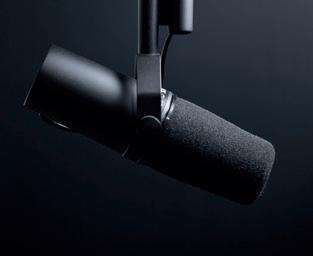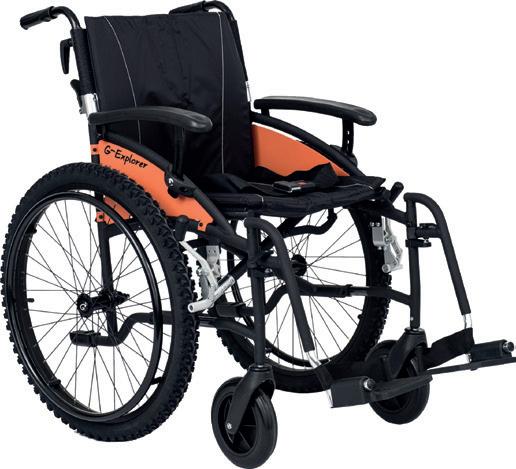
4 minute read
Podcasting for Beginners
PODCASTING
FOR BEGINNERS
Advertisement
You’ve listened to your fair share of podcasts, you’re knowledgeable about a topic, and you have a group of like-minded friends who you vibe with. What’s stopping you from starting your own occupational therapy podcast? If you’re worried about the technology involved, the logistics, or where to put it, never fear - we have the answers you seek.
LAY IT ALL OUT
If you’ve ever seriously considered making a podcast, you need to make sure of a few things: you have a good, sustainable idea, and you have people who you vibe with to join you. A podcast is difficult alone; it’s a recorded conversation. Do you have someone who you can converse naturally with to join you, or a solid stream of guests? Do you have time to record it in your busy schedule? Do you have enough topics to sustain you for more than two drawn out episodes? If your answer to all of these questions is “yes,” you have a winner on your hands.
SETTING UP
You have looked yourself deep in the eye and said, “yes, I am the podcaster of tomorrow.” That is good. You’ve made the commitment to get on board the podcast train, because everyone else has one, so why can’t you? It’s both deceptively easy and needlessly complex to get started with your podcast. Audio quality is important to a podcast, because…well, it’s recorded audio. It’s important that you can be heard with ease, and the clearer your audio is, the easier it is to edit. Of course, you can record your podcast with your phone’s microphone, but bear in mind that it is much easier to hear (and to edit) crisp, clear audio, and a more professional quality of set-up helps you appear more professional overall. A good microphone will take you a long way, but remember to buy one that has either a bidirectional or omnidirectional polar pattern if there’s going to be more than one of you recording in person to make sure you pick up all the right sound. Also, if you can, pick up a pop filter. This nifty little piece of fabric sits just in front of your mic and softens the natural “pop” noise that accompanies “p” and “b” sounds. If you’re looking for a microphone, here are some well-loved ones used by podcasters and streamers: BLUE YETI Pickup Pattern: Cardioid, omnidirectional, bidirectional, stereo Best for: Professional quality sound for roundtable discussions
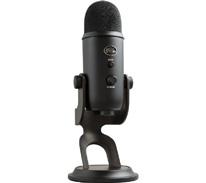
£119
TONOR TC30
Pickup Pattern: Cardioid Best for: Solo podcasters wanting bang for their buck
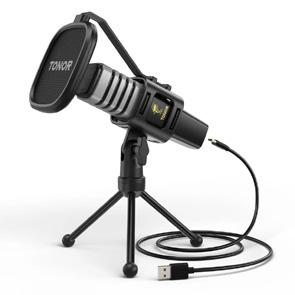
£31.99
BEEDOVE CONDENSER MICROPHONE
Pickup pattern: Cardioid Best for: Solo podcaster looking for complete package
£25.99
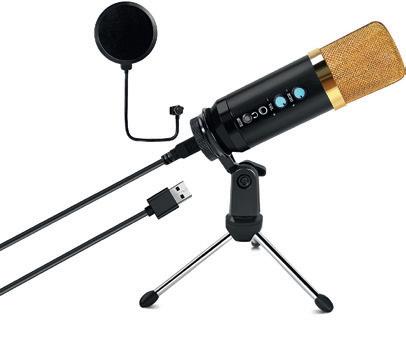
MARANTZ PRO POD PACK Pickup Pattern: Cardioid Best for: Podcaster looking for convenient solutions
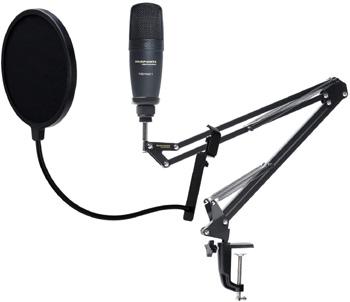
With the pandemic still ongoing, having friends around to make a podcast might be difficult, unless you live with said friends. That’s where programmes like Discord, Skype, Zoom and Facebook Messenger come in. These apps allow you to hold conversations online (using your jazzy new microphone), and ensure you’re not spending 30 minutes talking to yourself. It’s always a good idea to record your own audio and get all other parties involved to record theirs separately, too, just in case internet connections drop or things go haywire.
GET TALKING
Once you have the thing you’ll be talking into, you’ll need something to record it, otherwise it’s all been for nothing. Many of the programmes that you can record into also allow you to use them as editing software, which can really speed up the process of making your podcast happen. By and far the most popular choice for this is Audacity, a piece of free software that you operate simply by plugging in your mic and hitting record. It’s so simple to use, and it’s available on Mac, PC and Linux, so you don’t have much excuse for not using it! When it comes to editing the podcast, you might have to branch out. Many people use Adobe Audition to edit as it’s powerful, responsive, and can do many things free editors can’t - the downside being, it’s a bit pricey. Free alternatives, like Oceanaudio and Acoustica will still allow you to put together a really sharp podcast, however, and allow you to edit out mistakes, dead air, downtime, and just generally bad conversation that will inevitably happen!
FIND A HOST
You’ve recorded and edited your podcast, now where are you going to put it? You can’t just fling it on Spotify and call it a day, unfortunately; there are rules. If you’re looking to commit to podcasting, you could pay for a service like Podbean, Soundcloud, or Libsyn - all of which do offer free accounts or trials for you to have a shot of first. That being said, there’s nothing to stop you putting your podcast on YouTube, where it’s easily accessible by everyone. There is one drawback to this: it will mean you’ll need to learn how to make very basic videos. Never fear: your laptop or computer probably has iMovie or Movie Maker on it. All you need to do is pop your audio in the program, load in an image as a kind of “placeholder,” and hey presto, your podcast is ready for YouTube.
£45
